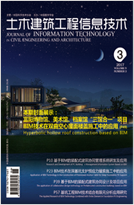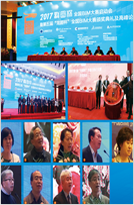2024, 16(4): 97-101. doi: 10.16670/j.cnki.cn11-5823/tu.2024.04.18
一种基于BIM构件数模分离的信息管理方法
中建科工集团有限公司,深圳 518000 |
An Information Management Method Based on BIM Component Digital-Analog Separation
China Construction Science and Industry Corporation Ltd., Shenzhen 518000, China |
引用本文:
丁东山, 邱吉宇, 赵凤昊, 卢皓. 一种基于BIM构件数模分离的信息管理方法[J]. 土木建筑工程信息技术,
2024, 16(4): 97-101.
doi: 10.16670/j.cnki.cn11-5823/tu.2024.04.18

Citation:
Dongshan Ding, Jiyu Qiu, Fenghao Zhao, Hao Lu. An Information Management Method Based on BIM Component Digital-Analog Separation[J]. Journal of Information Technologyin Civil Engineering and Architecture,
2024, 16(4): 97-101.
doi: 10.16670/j.cnki.cn11-5823/tu.2024.04.18

摘要:随着建筑行业的数字化转型,BIM技术已成为该行业的重要发展方向。基于BIM的数模分离技术是一种将几何模型信息与非几何模型信息分离的技术,能够实现构件的轻量化加载,减少重复建模工作量,并实现跨模型的重复使用。本研究主要探讨了数模分离技术的实现方法及其应用场景,将几何模型和非几何模型分离为不同的数据文件或数据结构,从而实现对建筑模型的全面数字化描述。几何模型可用于建筑形态表达、结构分析和施工模拟等方面,而非几何模型则适用于属性信息管理、施工组织设计和工程量计算等方面。这种技术有效提高了数据管理的效率和精度,减少了数据冗余和不一致性,为建筑行业的数字化转型提供了有力支持。
Abstract: As the construction industry undergoes digital transformation, BIM technology has emerged as a critical development direction. Within BIM technology, digital-analog separation is a technology that distinguishes geometric model information from non-geometric model information. This separation enables lightweight component loading, reduces repetitive modeling workload, and facilitates cross-model reuse, offering significant application value. This paper discusses the implementation methods and application scenarios of digital-analog separation technology. By dividing the geometric model and the non-geometric model into separate data files or structures, a comprehensive digital representation of the building model is achieved. Geometric models are utilized for architectural form representation, structural analysis, and construction simulation, whereas non-geometric models are employed for attribute information management, construction organization design, and quantity calculations. This method enhances data management efficiency and accuracy, minimizes data redundancy and inconsistencies, and provides robust support for the digital transformation of the construction industry.
| [1] |
Salleh H, Ahmad A A, Samad A Z, et al. BIM Application in Construction Projects: Quantifying Intangible Benefits[J]. Buildings, 2023, 13(6). |
| [2] |
文涛. 广西新媒体中心项目BIM技术综合应用[J]. 土木建筑工程信息技术, 2020, 12(05): 70-76.doi: 10.16670/j.cnki.cn11-5823/tu.2020.05.12 |
| [3] |
张雪, 刘学贤. 基于BIM技术的参数化构件信息管理研究[J]. 建筑与文化, 2022(02): 65-67. |
| [4] |
宋楠楠. 基于Revit的BIM构件标准化关键技术研究[D]. 西安: 西安建筑科技大学, 2015. |
| [5] |
陈远, 段晓月, 康嘉琪. 基于公有云的建筑企业BIM构件库管理系统研发[J]. 施工技术, 2020, 49(24): 15-18+75. |
| [6] |
罗文, 任玉春, 胡耀文. Revit几何模型提取与Web可视化研究[J]. 现代信息科技, 2020, 4(17): 17-19. |
| [7] |
胡振中, 刘毅, 林超. 基于BIM的工程管理信息技术研究展望[J]. 工业建筑, 2022, 52(10): 195-203. |
| [8] |
李鑫, 蒋绮琛, 于鑫, 等. 基于企业架构的BIM族库管理系统研究与实践[J]. 土木建筑工程信息技术, 2020, 12(01): 54-59.doi: 10.16670/j.cnki.cn11-5823/tu.2020.01.08 |
| [9] |
徐嘉懿, 邓雪原. 面向运维阶段的多源异构BIM数据存储方法研究[J]. 建筑技术, 2020, 51(05): 529-533. |
| [10] |
Jing S, Perola O, Helen E, et al. Evaluating the geometric aspects of integrating BIM data into city models[J]. Journal of Spatial Science, 2020, 65(2). |
| [11] |
梁启行, 马力. 基于BIM技术的建设工程报建及放线测量应用研究[J]. 城市勘测, 2022(03): 139-142. |
| [12] |
陈庆军, 王永琦, 汪洋, 等. 基于Revit及Revit API的应县木塔建模研究[J]. 西安建筑科技大学学报(自然科学版), 2017, 49(03): 369-374+381. |
| [13] |
贾盈平, 李春祥. 面向属性的参数化建模在Revit API中的应用[J]. 计算机辅助工程, 2016, 25(04): 72-76. |
计量
- PDF下载量(20)
- 文章访问量(900)
- HTML全文浏览量(459)















